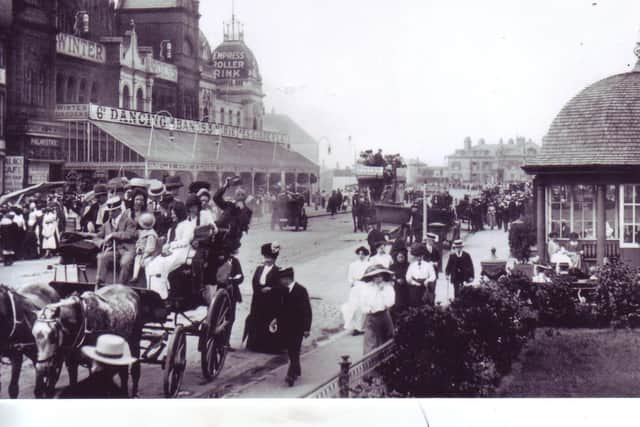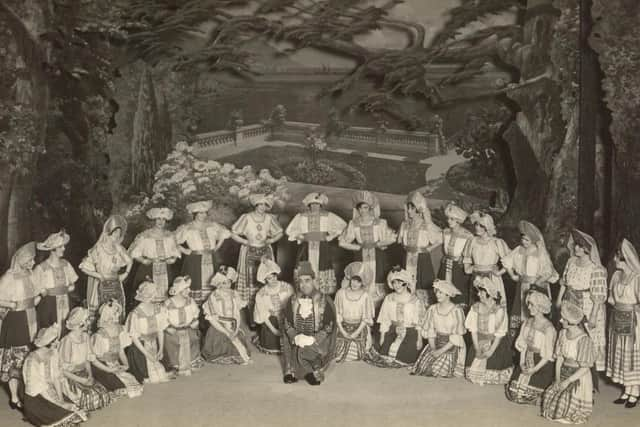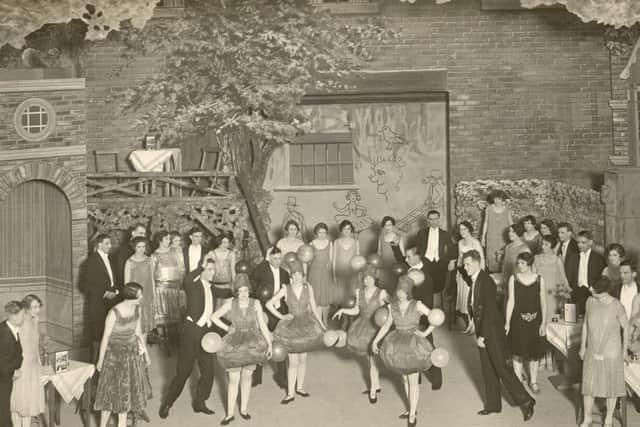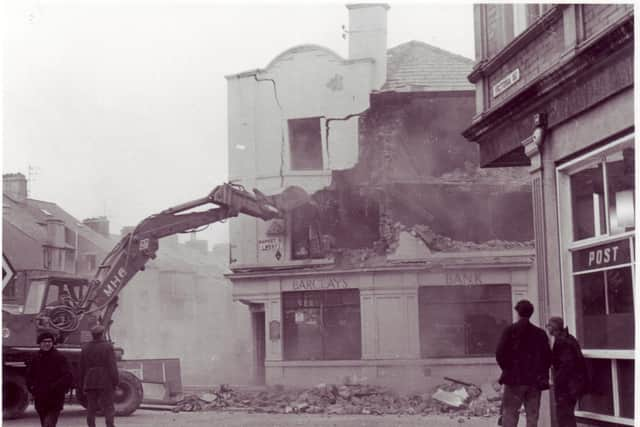The grand old days of Victorian music halls
and live on Freeview channel 276
In Great Britain variety was originally known as music hall, especially during the early to mid - Victorian era, though the two terms are often used interchangeably.
Until the railways were established it was difficult and expensive for actors and music hall performers to tour the provincial halls.
Advertisement
Hide AdAdvertisement
Hide AdThe effect of the railways on popular entertainment meant greater mobility, not only for the public but also for the London based touring companies. Productions were now able to penetrate the provinces by train.


The origin and demise of the music halls and variety theatres, closely parallels the steam era spanning about 140 years beginning with George Stephenson’s ‘Rocket’ steam locomotive in 1829 and ending with the last British Railways steam locomotives in regular service which were condemned to a siding and the cutter’s torch on August 4, 1968.
Likewise the period that begins with the first music hall c1832 ends with the closure of the last variety theatres in the mid-1960s.
As the railway expanded, theatres and music halls began to stage international performances on a lavish scale, increasingly served by the railway with improved mobility for scenery, costumes, animals and equipment.
Advertisement
Hide AdAdvertisement
Hide AdAt Preston the legendary music hall Marie Lloyd performer Marie Lloyd sang the railway song ‘Oh! Mr Porter what shall I do? I want to go to Birmingham and they’re taking me on to Crewe.’


Fortunately, however she caught the right train when she topped the bill at Preston’s Royal Hippodrome on October 30, 1911.
The entire cast would have travelled by train before arriving at the next music hall on their tour.
Preston’s King Palace and Royal Hippodrome finally succumbed to television and changing styles in entertainment during 1955 and 1957 respectively.
Advertisement
Hide AdAdvertisement
Hide AdUsing Preston as a model for the development of generic music hall and later the variety theatres, the spotlights are fixed firmly on the country’s greatest music halls, variety theatres, opera houses and legitimate theatres.


The passing of Morecambe and Wise and Ken Dodd signalled the last of the genre of music hall performers and the end of an era.
It is also worth recording that Morecambe and Wise’s partnership was established during a provincial train journey in 1940, when Eric’s mum and mentor travelling with the two teenagers suggested: ‘why don’t you two form a double act’?
Eric Bartholomew was born in the Lancashire seaside resort of Morecambe, where his mother Sadie worked as an usherette at Morecambe Winter Gardens. They performed their double-act for the first time at the Liverpool Empire in 1941 under the watchful eye of Jack Hylton.
Advertisement
Hide AdAdvertisement
Hide AdSo began the comedy legends ‘Morecambe and Wise,’ journey to stardom, which stayed on the rails, at least most of the time!


The pair later graduated to the top Moss Empire variety circuit embracing the prestigious London Palladium, not to mention the infamous Glasgow Empire.
Glasgow Empire was known in the trade as the comic’s graveyard or the ‘House of Terror,’ and it was a challenge too for Eric and Ernie, despite the extra £10 the Empire management paid them, ostensibly for the rail fare but strongly rumoured to be danger money.
The stage manager told them not to forget to duck from an assortment of fruit hurled onto the stage.
Advertisement
Hide AdAdvertisement
Hide AdAfter one evening performance the stage manager offered a little encouragement: ‘Did you hear that - silence - they’re beginning to like you.’ Morecambe and Wise spent 25 years treading the boards to earn a twice nightly living, at first in provincial music halls travelling the country behind steam hauled trains, before becoming a national institution on British television.
Frank Matcham designed at least 80 theatres as original architect and was involved in minor and major rebuilds of eighty more between 1873 and 1913. A total of 28 buildings survive.
They include Blackpool’s Grand Theatre and the Tower Ballroom of 1899 as well as notable theatres in London and the provinces.
The Blackpool Grand Theatre opened in 1894, and today survives as a Matcham masterpiece, personifying the glories of the late Victorian theatre.
Advertisement
Hide AdAdvertisement
Hide AdThe importance of Matcham’s work lies in the way he pioneered technical innovation in theatre construction with long span steel beams and cantilevers, supporting the Grand’s three tiers and without the use of obstructing supporting pillars.
Blackpool’s Victorian treasure was built as the prettiest theatre in the Kingdom but it was only to be spared the bulldozers in the nick of time in the early 1970s.
The theatre was saved from demolition by the venerable campaigner the late Major A. Burt Briggs of Lytham St Annes, who spearheaded a successful campaign following closure of the theatre.
The Grand was reopened by the Grand Theatre Trust, on March 23, 1981 with a performance of the Merchant of Venice and survives as an all year working theatre to this day.
Advertisement
Hide AdAdvertisement
Hide AdThe Grand Theatre, Lancaster, is one of the oldest surviving theatres in the country opening in 1782.
Frank Matcham designed an extensive re-modelling of the stage and auditorium but a major fire in 1908 gutted the interior of the Grand.
Less than eight months later it reopened and remains to the present day. In nearby Morecambe during 1897 the Victoria Pavilion, later Morecambe Winter Gardens Theatre, opened as a Music Hall on the site of a former entertainment complex which incorporated seawater baths, bars and a ballroom.
Morecambe and coastal resorts along the Lancashire and Cumbrian coast abounded in white faced Pierrots and concert party companies performing in the open air or at the end of the pier show.
Advertisement
Hide AdAdvertisement
Hide AdDaily orchestral music delighted visitors in the huge glass pavilion on Morecambe’s West End Pier, while down below on the sands entertainers had performed since 1899.
Morecambe sands near the Old Stone Jetty was the venue for Papa Parson’s all-ladies troupe known as the Lucky Little Lancashire Lassies in reality his wife and seven daughters, could this have been the pre-cursor to the Spice Girls?
Fifty years later visitors still had a wide choice of entertainment in the resort’s cinemas and theatres.
The choices ranged from Henry Claxton’s regular summer revue ‘Gaytime’ at the Palace Theatre, Sandylands Promenade to Eddie Morrell’s ‘Starlights’ in its twentieth season at the long gone Central Pier (built 1869) The Winter Gardens staged traditional music hall acts like Morecambe’s own Albert Modley while the prominent Alhambra Theatre staged its sleazy summer revue.
Advertisement
Hide AdAdvertisement
Hide AdDuring the mid - 1950s Morecambe Royalty Theatre, long associated with Thora Hird, was drifting towards closure as a live theatre.
The Morecambe Royalty opened on April 14, 1898, with a capacity for 1,555 people both standing and sitting in stalls, circles and private boxes.
It held theatre performances throughout the year and showed films during the winter seasons.
It became a cinema in 1961, then a bingo hall before closing as a cinema again in 1967. It was demolished in 1972
Advertisement
Hide AdAdvertisement
Hide AdMorecambe’s most famous son, Eric was a keen fisherman and bird watcher.
He enjoyed bird watching with binoculars in nice places, away from the stage and his busy schedules.
Eric returned to Morecambe occasionally, and one day I spotted him bird watching whilst sat comfortable in his car at Hest Bank, near his native seaside town.
He seemed to be absorbed whilst watching the high tide wader roost, so I chose not to intrude on his privacy.
Advertisement
Hide AdAdvertisement
Hide AdIt is no surprise, therefore that the wonderful statue of Eric, (in familiar pose) which adorns Morecambe promenade also has a pair of binoculars.
There is no doubt that the early music halls flourished with the mass mobility that the railways brought for passengers long before the age of the automobile.
They enabled famous classic music hall acts to travel the country by the extensive railway network and to reach their theatre digs on time for the matinée and twice-nightly performances at the nation’s variety theatres.
Today variety and music hall survive but only as uncomfortable revivals of the real thing.
Advertisement
Hide AdAdvertisement
Hide AdMoreover, the rebirth of preserved steam locomotives is now of interest to those wanting to experience the magic of the steam age.
*By Rail to the Music Halls by David Hindle MA.
Silver Link Publishing and Morton’s Media Group, hardback, costs £25.